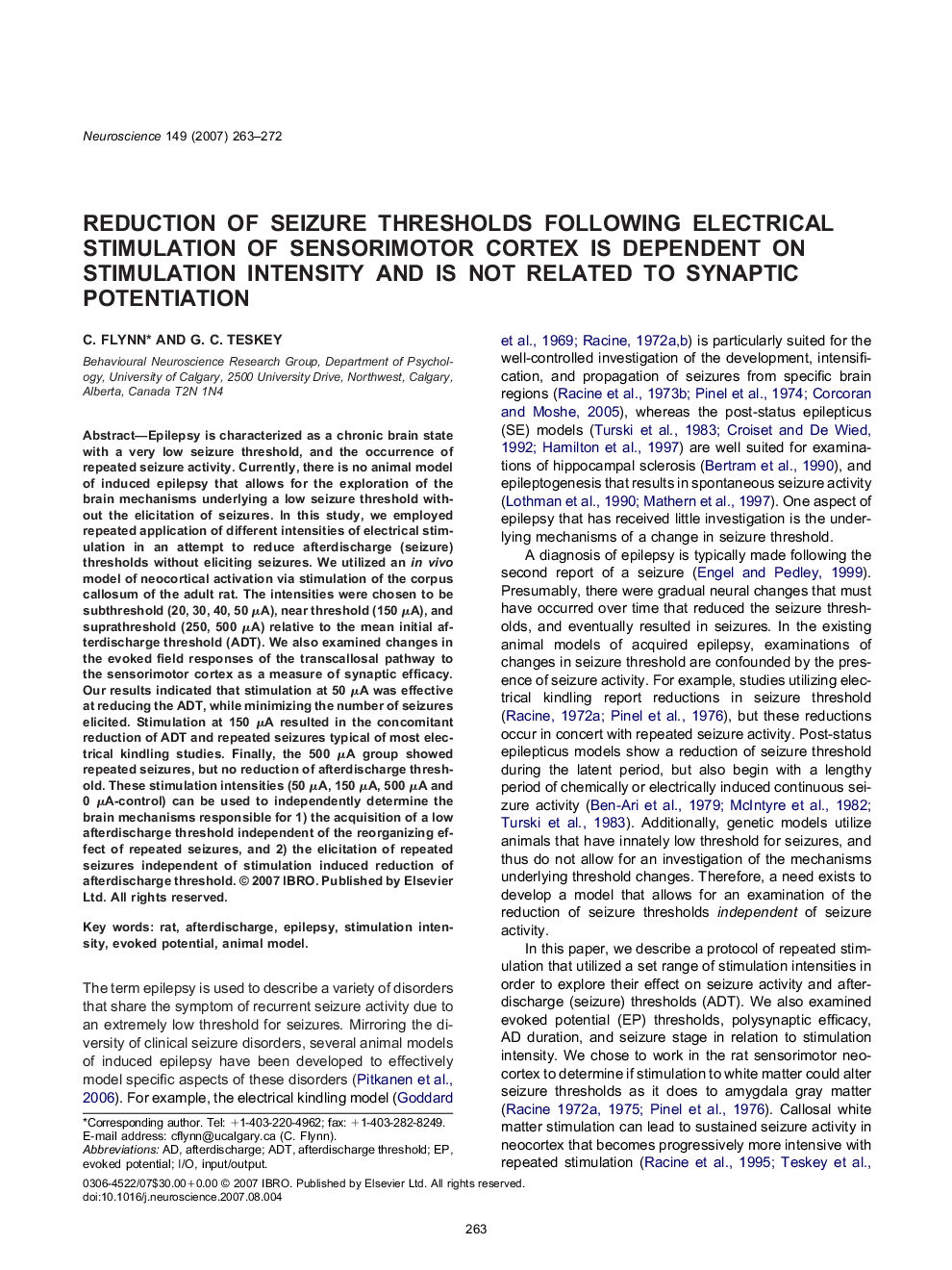| Article ID | Journal | Published Year | Pages | File Type |
|---|---|---|---|---|
| 4342465 | Neuroscience | 2007 | 10 Pages |
Epilepsy is characterized as a chronic brain state with a very low seizure threshold, and the occurrence of repeated seizure activity. Currently, there is no animal model of induced epilepsy that allows for the exploration of the brain mechanisms underlying a low seizure threshold without the elicitation of seizures. In this study, we employed repeated application of different intensities of electrical stimulation in an attempt to reduce afterdischarge (seizure) thresholds without eliciting seizures. We utilized an in vivo model of neocortical activation via stimulation of the corpus callosum of the adult rat. The intensities were chosen to be subthreshold (20, 30, 40, 50 μA), near threshold (150 μA), and suprathreshold (250, 500 μA) relative to the mean initial afterdischarge threshold (ADT). We also examined changes in the evoked field responses of the transcallosal pathway to the sensorimotor cortex as a measure of synaptic efficacy. Our results indicated that stimulation at 50 μA was effective at reducing the ADT, while minimizing the number of seizures elicited. Stimulation at 150 μA resulted in the concomitant reduction of ADT and repeated seizures typical of most electrical kindling studies. Finally, the 500 μA group showed repeated seizures, but no reduction of afterdischarge threshold. These stimulation intensities (50 μA, 150 μA, 500 μA and 0 μA-control) can be used to independently determine the brain mechanisms responsible for 1) the acquisition of a low afterdischarge threshold independent of the reorganizing effect of repeated seizures, and 2) the elicitation of repeated seizures independent of stimulation induced reduction of afterdischarge threshold.
